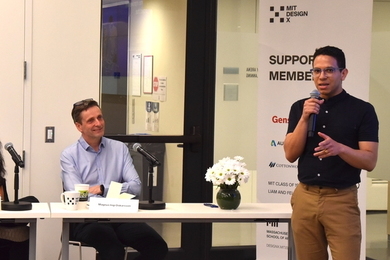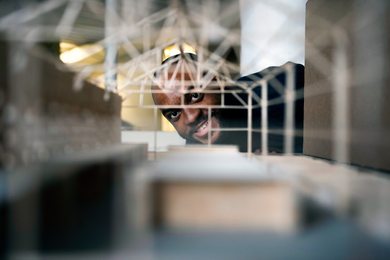Preparing to be prepared
Miho Mazereeuw, an architect of built and natural environments, looks for new ways to get people ready for natural disasters.
Study: Extreme heat is changing habits of daily life
New research quantifies how much very hot temperatures restrict outdoor activity in China.
Machinery of the state
Associate Professor Mai Hassan documents bureaucratic systems in Eastern Africa set up for coercion, as well as roadblocks to democratic government.
Urbanization: No fast lane to transformation
Associate Professor Noah Nathan is generating a body of scholarship on the political impacts of urbanization throughout the global South.
Designing the cities of tomorrow
Carlo Ratti investigates how digital technologies transform our urban spaces and how they can be harnessed to design sustainable cities for the future.
Power, laws, and planning
MIT urbanist Justin Steil studies how law and policy are used to replicate social divisions in the use of land.
Passion projects prepare to launch
MITdesignX presents ventures from the accelerator's sixth cohort.
Your friendly neighborhood architect
Graduate student Justin Brazier lends his design skills to community projects in the Greater Boston neighborhoods where he grew up.
Driving a human-machine collaboration
In MIT Mobility Forum talk, experts discuss a future for vehicle automation that lets technology and drivers interact.
With new industry, a new era for cities
In his book, “New Industrial Urbanism,” Eran Ben-Joseph looks at the evolving form and function of 21st-century cities.
Ride-hailing without the traffic snarls?
Study suggests how much competition in the urban ride market can grow before gridlock sets in.
Q&A: Randolph Kirchain on how cool pavements can mitigate climate change
MIT research scientist explores how cool pavements can offer climate change solutions in more than just the summer.
MIT Center for Real Estate launches the Asia Real Estate Initiative
New effort empowers MIT researchers to shape real estate’s future and build responsibly and sustainably.
Research aims to mitigate chemical and biological airborne threats
Lincoln Laboratory leads a large-scale measurement campaign in New York City to improve air dispersion models and emergency protocols.














